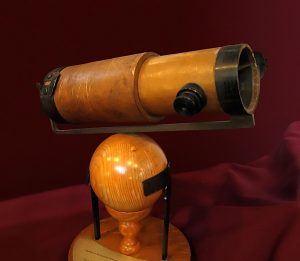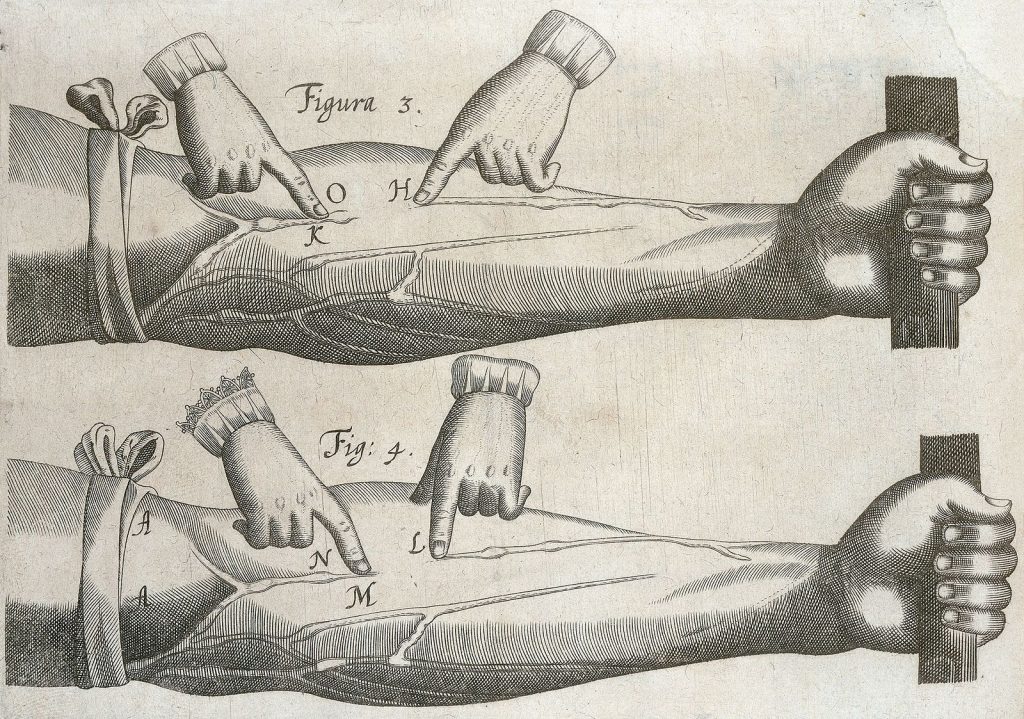—Twentieth century history of science invented a ‘Scientific Revolution’ for the sixteenth and seventeenth centuries to acquire a prestigious past.—
The Scientific Revolution of the sixteenth and seventeenth centuries is an invention of the historians of the first decades of the twentieth century. Beginning in the 1940s, the expression triumphed in textbooks, encyclopaedic works and literature for the general public; a triumph not without connection to the trauma of the two World Wars and the loss of innocence with regard to the atrocious consequences that technological and scientific development could have when applied to destruction. The success of this creation was such that, despite the passing of time, it is still present in many of the approaches to the history of science by scientists themselves along with professionals in teaching, journalism and the social sciences. The strongest arguments defending the existence of such a revolution have their origins in a view of the history of science as a history of scientific ideas largely independent of the historical context where those ideas were produced and circulated, and initially focused on the ‘discoveries’ coming from astronomical and cosmological knowledge, with the leading protagonists being a handful of great figures touched by supposed genius to discover the laws by which the universe was governed.
In fact, the Scientific Revolution was initially built on the basis of three fundamental and successive milestones, in an ascending and progressive line until the certain knowledge of physical reality was reached. The first of the milestones was the Heliocentric theory formulated by Nicholas Copernicus in his De revolutionibus orbium coelestium libri VI (Six Books Concerning the Revolutions of the Heavenly Orbs), published in 1543. The second was the telescopic observations and experiment on motion carried out by Galileo Galilei between 1604 and 1632. Finally, the third myth of the Scientific Revolution is usually grounded on the formulation of the Laws of Gravitational Physics in the Philosophiæ Naturalis Principia Mathematica, (Mathematical Principles of Natural Philosophy), a work that Isaac Newton published in 1687.
These three thinkers were to break away from the paradigm of ancient and medieval cosmology (represented by Ptolemy in astronomy and by Aristotle in physics) and enable the emergence of modern science, whose evolution – linear, progressive and inevitable – would continue until the contemporary world. The invention of the Scientific Revolution is closely related to a positive and prestigious image of the Renaissance, coming from other disciplines such as the history of art and philosophy. The Renaissance was presented as the overcoming of the medieval ‘dark centuries’, due to the recovery of classical knowledge, the abandonment of theocentricism and the secularisation of philosophical and scientific knowledge. The success of the formula led to advocating the expansion of the concept of the Scientific Revolution to encompass other disciplines beyond cosmology, astronomy, mathematics, and physics. Thus, chemistry, medicine and even agronomy, constructed the past of their disciplines with the intention of discovering their specific ‘revolutions’ and placing them at the dawn of modernity

The Copernican heliocentric model illustrated in 1661 by the German cartographer Andreas Cellarius. Wikimedia.

Dialogue between Aristotle, Ptolemy and Copernicus. Engraving by Stefano della Bella for the cover of Galileo’s Dialogue (Florence,1632). Wikipedia.
The first to construct a similar account was medicine. It was a question of seeking out a series of milestones that were comparable to those of the physical-mathematical sciences and that would result in the critique of medieval medicine based on the scholastic reading of Galen’s work. It was not difficult to reach two of those key milestones. The first of these coincided with the appearance of the work of Copernicus. This is the publication in Basel in 1543 of De humani coporis fabrica (On the Structure of the Human Body) by Andrés Vesalius, defender of a human anatomy that was not based on book knowledge but on the direct observation of the cadaver on the dissection table. The development of the supposed Vesalian anatomical revolution in the field of physiology would bring with it the second of the ‘revolutionary’ milestones: the discovery of the circulation of blood described in William Harvey’s De motu cordis et sanguinis in animalibus (On the Motion of the Heart and Blood in Animals), a text published in 1628, in which the foundations of Galen’s physiology were undermined.

Replica of the second model of the reflecting telescope presented by Isaac Newton to the Royal Society of London in 1672. Wikipedia.
From the 1960s on, the progressive rise of a social history of science, presented as overcoming the history of science understood exclusively as the history of scientific ideas, adapted the narrative of the Scientific Revolution of the sixteenth and seventeenth centuries, although without questioning its existence. It was about incorporating social, economic and cultural aspects, beyond the purely internalist. The work of the American physicist Thomas S. Kuhn on The Structure of Scientific Revolutions (published in English in 1962, translated into numerous languages, including Spanish in 1971) had a considerable impact on this reorientation, as it proposed a seemingly simple formula for identifying ‘scientific revolutions’ and ‘paradigm shifts’ in the understanding of the physical world, taking into account both the thought structure of its great protagonists and the social and institutional context in which they developed. A simplistic and superficial reading of Kuhn’s work also produced a considerable amount of academic ‘noise’, in the form of the exegesis of the Kuhnian text. This became almost a catechism for reluctant teachers and students in a hurry, as well as serving to generate, usually fruitless, discussions about when and how they were produced and who provoked successive ‘scientific revolutions’. Meanwhile, in the specialised field of the history of science, more attention was paid to the institutions, economic conditions and social groups that developed scientific and technical activities throughout the period in which these revolutions were supposed to have taken place.

Vesalius dissecting a woman in Padua in front of a large audience. Cover of the Fabrica (Basel, 1543). Wikipedia.
The Scientific Revolution ceased to be a succession of individual discoveries, theories or inventions, to be based on more complex processes of social and cultural change. For example, the emergence of the printing press in the second half of the fifteenth century, the changes experienced by university education from the second half of the sixteenth century or the emergence of academies and scientific journals in the second half of the seventeenth century became the new milestones of ‘modern science’. The effect of all this was paradoxical: the claims of the Scientific Revolution blurred its borders, lost the brightness of its great figures and stretched its chronological limits so much that it ended up diluting and rendering the very concept of revolution meaningless. Therefore, from the beginning of this century, the very existence of the Scientific Revolution began to be seriously questioned.
First, it seemed unreasonable to invoke a defence of an alleged revolution of more than two centuries’ duration. Secondly, it made no sense to project divisions in disciplines from the nineteenth (and some from the twentieth) century to a remote past in which such divisions neither existed nor made sense. The anachronisms derived from this approach made it difficult to understand a long historical period that remained crucial to understanding the triumph of science and technology in the contemporary world, yet whose explanation could no longer be based on this heroic account. Third, the critical claim to knowledge of the ancients was not exclusive to the sixteenth and seventeenth centuries. The persistence of book culture, the weight of religious beliefs in the understanding of nature, of its supposed order and processes of change and transformation remained remarkable during those two centuries.
Finally, just as there is no evolution of human thought and ideas in an isolated or immanent way, there has never been a progressive and ordered historical journey of ‘revolutions’ or ‘paradigm shifts’ that, through unstoppable growth, have led to the final goal, which in our case would be the triumph of technoscience in our present. This route is fictitious, ignores the cultural realities of the different societies of the past, is too Eurocentric and androcentric and, in short, implies the defence of a teleologism that is ultimately ahistorical and presentist. In a way, we could say that ‘science’, understood as a set of practices and knowledge related to the knowledge of nature, arose long before science as we currently understand it, whose current understanding starts rather from the nineteenth century on.

Experiment showing the function of the valves in the veins of the forearm. Engraving from William Harvey’s De motu cordis et sanguinis (Frankfurt, 1628). Wikipedia.
What seems evident is that during the sixteenth and seventeenth centuries, the cultural elite of Western European society played an increasingly visible role in numerous controversies between ‘ancient and modern’, which were settled in the fields of theology, cosmology, mathematics, natural philosophy, geography, philology, as well as in those of general, natural and moral history. In this sense, Western European society experienced a remarkable development in both a series of academic and artisan cultures around the knowledge of nature. Within this, increasingly controlled experimental practices emerged with results that granted and strengthened the visibility and social prestige of new participants and new knowledge, seeking to assimilate the intellectual and material consequences of colonial and commercial expansion, as well as the discovery of ‘others’ on a global scale.
José Pardo Tomás
IMF-CSIC
How to cite this paper:
Pardo Tomás, José. Was there a Scientific Revolution? Sabers en acció, 2020-11-27. https://sabersenaccio.iec.cat/en/was-there-a-scientific-revolution/.
Find out more
You can find further information with the bibliography and available resources.
Recommended reading
Dear, Peter; Revolutionizing the Sciences. Knowledge and Its Ambitions 1500-1700. Basingstoke: Palgrave Macmillan, 2009.
Principe, Lawrence M.; La revolución científica: una breve introducción. Madrid: Alianza Editorial; 2013.
Shapin, Steven; La Revolución científica. Una interpretación alternativa. Barcelona: Paidós; 2000.
Studies
Cohen, Floris H. The Scientific Revolution: An Historiographic Inquiry. Chicago: The University of Chicago Press; 1994.
Freudenthal, Gideon; McLaughlin, Peter; The Social and Economic Roots of the Scientific Revolution. Dordrecht; Springer Netherlands; 2009.
Koyré, Alexandre. The Origins of Modern Science: A New Interpretation. Diogenes, 1956; 16: 1-22.
Kristeller, Paul Oskar. The Place of Classical Humanism in Renaissance Thought. Journal of the History of Ideas, 1943; 4 (1): 59-63.
Kuhn, Thomas S. La estructura de las revoluciones científicas. México: Fondo de Cultura Económica; 1971.
Lindberg, David C.; Westman, Robert S. eds. Reappraisals of Scientific Revolution. Cambridge: Cambridge University Press; 1990.
Porter, Roy; Teich, Mikuláš. The Scientific Revolution in National Context. Cambridge: Cambridge University Press; 1992.
Rosen, Edward. Renaissance Science as seen by Burckhardt and his Successors. In: Tinsley Helton, ed. The Renaissance: A Reconsideration of the Theories and Interpretations. Madison, WI: University of Wisconsin Press; 1961: 77-103.
Sarton, George. Science in the Renaissance. In: Westfall Thompson, James; Rowley, George; Schevill, Ferdinand; Sarton, George, eds. The Civilization of the Renaissance. New York: F. Ungar; 1959.



